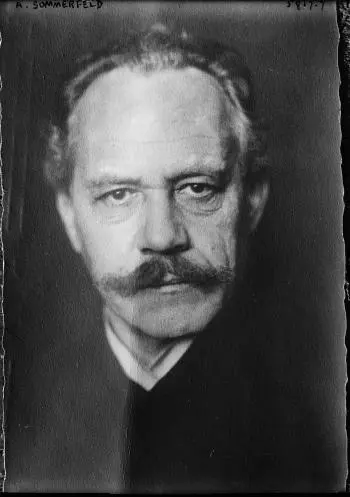
Arnold Sommerfeld's prominent figure in the history of physics is not only notable for his vast erudition, but also for his significant contributions to atomic theory.
This article will dive into Sommerfeld's biography, exploring his achievements and legacy in the scientific field.
Arnold Sommerfeld Biography
Arnold Johannes Wilhelm Sommerfeld was born on December 5, 1868, in Königsberg, Prussia. Initially, he showed an early interest in mathematics, which would eventually lead to an exceptional career in theoretical physics.
Sommerfeld studied mathematics at the University of Königsberg, where he earned his doctorate under Ferdinand von Lindemann in 1891.
After completing his doctorate, Sommerfeld embarked on an academic journey, collaborating with notable scientists of the time.
In 1900, he worked with Felix Klein in Göttingen, and later, in 1906, he was appointed professor at the University of Munich, where he would remain for much of his career.
For more information about his life you can find more details in this article .
Contributions to theoretical physics
Sommerfeld's most notable contribution to theoretical physics is evident in his development and expansion of quantum theory. Working on the foundations laid down by Niels Bohr, Sommerfeld introduced elliptical and asymmetric orbits into the atomic model, significantly improving the accuracy of spectral predictions.
His focus on angular quantization and his formulation of quantization rules led to the quantum Sommerfeld model, which became a cornerstone for atomic theory in the first half of the 20th century. These advances not only provided a more accurate interpretation of atomic spectra, but also paved the way for later developments in quantum theory.
Development of electron theory
Sommerfeld also played a fundamental role in the theory of electrons. Expanding on the works of Paul Drude and Hendrik Lorentz, Sommerfeld introduced the theory of free electrons in metals, advancing our understanding of electrical conductivity in solids.
His model, known as Sommerfeld's theory, had a significant impact on solid-state physics and electronics.
Contributions to the atomic model

Arnold Sommerfeld incorporated elliptical and asymmetric orbits for electrons, in contrast to Bohr's circular orbits. Additionally, he introduced the concept of additional quantum numbers, including the azimuthal quantum number, which specifies the shape of the orbit.
These adjustments allowed a more precise description of atomic spectra, especially for atoms with more than one electron. Sommerfeld's quantum model also considered interactions between electrons, which improved the accuracy of predicting spectral lines and provided a stronger basis for understanding atomic properties.
Although Sommerfeld's model was later surpassed by more advanced quantum theory, his contributions were fundamental to the development of quantum physics and the understanding of atomic structure.
Legacy and recognitions
Sommerfeld's legacy is reflected not only in his individual achievements but also in the influence he had on his students. Among his disciples were distinguished scientists such as Werner Heisenberg, Wolfgang Pauli and Hans Bethe, who later played leading roles in the development of theoretical physics.
Throughout his career, Sommerfeld received numerous honors and recognitions. He was awarded the Lorentz Medal in 1914 and the Max Planck Medal in 1927. In addition, he was appointed president of the German Physical Society (Deutsche Physikalische Gesellschaft) in 1918 and 1935. His influential role in the academy earned him nominations on several occasions for the Nobel Prize , although he never received it.
Conclusion
In summary, Arnold Sommerfeld stands as a crucial figure in the history of physics, particularly in the development of atomic theory and quantum physics.
His ability to integrate advanced mathematics with theoretical physics distinguishes him as a pioneer in his field. Through his teaching and mentoring, Sommerfeld left a lasting legacy that continues to influence successive generations of scientists.


